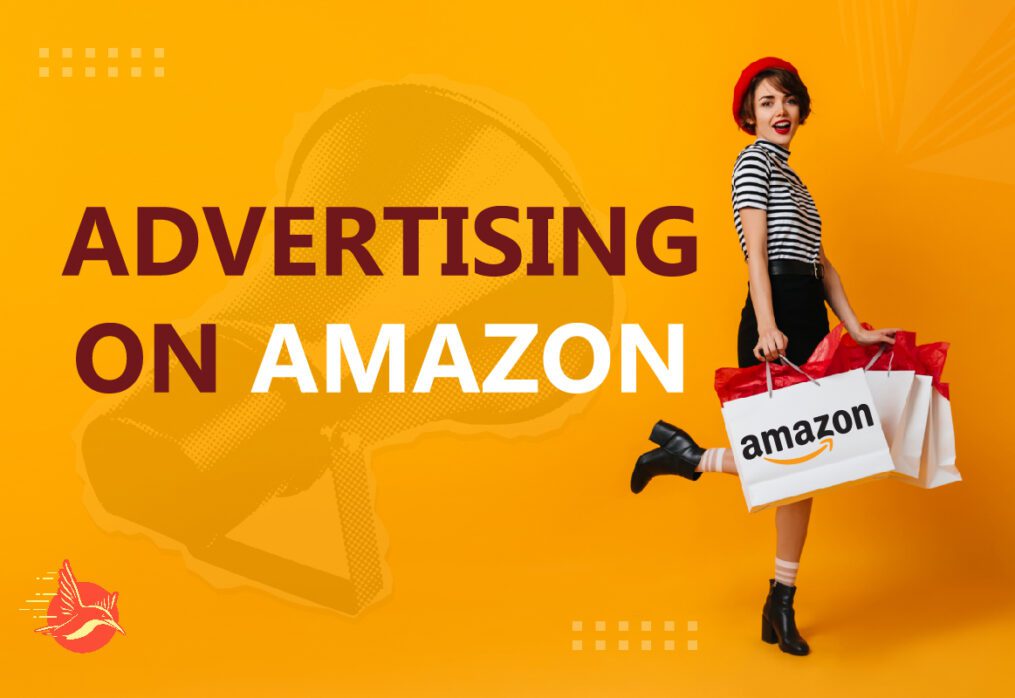Today, we’ll explore the burning question: Is advertising on Amazon worth your investment?
From making ad campaigns better to increasing profit, we take a close look. We explore Amazon advertising, sorting fact from fiction. We also find the best ways to do things. Are you an experienced seller? We can help you improve even more. Just starting? We have the tips you need. This article gives you the advice and steps to succeed with Amazon ads.
So, if you’re ready to unlock the full potential of Amazon advertising and propel your business to new heights, join us on this insightful journey. Stay tuned for actionable tips and strategies that will revolutionize your approach to advertising on Amazon. Let’s dive in and discover the power of Amazon advertising together.
Overview of the PPC System
When delving into the realm of pay-per-click (PPC) advertising, understanding the intricacies of the entire system is crucial. From Amazon’s overarching strategy to the mechanics of bidding and payment, grasping the fundamentals sheds light on the efficacy and potential of PPC campaigns.
At its core, PPC advertising on Amazon operates as a second-tier auction system. This means advertisers pay one penny more than the next highest bidder below them. For instance, if one advertiser bids a dollar and another bids 55 cents, the former pays 56 cents. This auction mechanism incentivizes advertisers to bid strategically, balancing competitiveness with cost-effectiveness.
The primary objective of PPC advertising is to boost sales volume and enhance conversion rates. By strategically allocating advertising budgets, sellers aim to elevate their products’ visibility and drive traffic, ultimately leading to increased sales. Moreover, effective PPC campaigns can positively impact organic ranking, bolstering a product’s visibility across relevant keywords and categories on Amazon’s expansive platform.
It’s essential to note the contrast between Amazon’s PPC model and traditional PPC platforms like Google. While Google used to operate on an equal pay basis, where advertisers paid the full amount they bid, Amazon’s auction system introduced Advertising, which catalyzes rapid keyword expansion and improved ranking. By strategically bidding on relevant keywords and advertising on them, sellers can accelerate their visibility across Amazon’s vast ecosystem. Advertising on Amazon enables sellers to scale up their presence swiftly, ensuring that their products surface prominently when customers search for relevant keywords.
Deciphering Data Metrics and Setting Goals for Amazon Advertising Campaigns
Success isn’t just about starting campaigns. Initially, it’s about understanding the data that indicates performance and subsequently aligning this with your major goals. Furthermore, experts concur that recognizing these crucial figures is vital. Ultimately, this knowledge allows you to assess the effectiveness of your ads and strategically enhance them.
At the forefront of metrics analysis lies the Advertising Cost of Sales (ACoS) and Total Advertising Cost of Sales (TACoS). ACoS serves as a measure of efficiency within campaigns, while TACoS offers a broader perspective, enabling sellers to assess scalability and overall profitability. By scrutinizing these metrics, sellers can fine-tune their advertising budgets and ensure optimal resource allocation across campaigns.
Other Metrics
Equally crucial are metrics such as Click-Through Rate (CTR) and Impressions, which provide insights into the reach and engagement of your ads. A higher CTR indicates relevance and resonance with your target audience, while Impressions offer a glimpse into the extent of your ad’s visibility across Amazon’s platform. These metrics serve as barometers for evaluating the effectiveness of your ad creatives and targeting strategies.
Ultimately, choosing metrics hinges on aligning them with your specific goals and objectives. While Amazon recommends aiming for an ACoS of 8% to 14%, the optimal TACoS may vary depending on factors such as competition, product lifecycle, and budget constraints. By leveraging a holistic approach to metrics analysis, sellers can navigate the intricacies of advertising on Amazon with confidence, driving sustainable growth and success on the platform.
Negating Keywords: What is it, and How do you do it?
Negating keywords is a crucial aspect of refining Amazon advertising campaigns, allowing sellers to optimize their targeting and minimize wasteful ad spend. But what exactly does it entail, and how can sellers effectively implement negating strategies to enhance campaign performance?
In essence, negating keywords involves excluding specific search terms or phrases from triggering an ad’s appearance, thereby preventing irrelevant clicks and conserving the advertising budget. These negative keywords are derived from customer search terms, distinct from the targeted keywords in the campaign.
For instance, consider a seller advertising on Amazon for a “garlic press.” While targeting this term, their ad may also appear for search terms like “large garlic press.” However, targeting the term “large garlic press” would be ineffective and wasteful if the seller only offers small garlic presses. In such cases, negating the irrelevant keyword “large garlic press” ensures that ad spending is directed toward more relevant searches, optimizing campaign efficiency.
Moreover, sellers have the flexibility to apply negating strategies at different match types, including exact and phrase matches. By utilizing phrase match negations, sellers can exclude broader variations of keywords, ensuring precise targeting and accurate data analysis.
It’s important to note that negating keywords operates at the campaign level, impacting all products within the campaign. Therefore, sellers must strategically structure their campaigns to align with their product offerings and targeting objectives. For instance, if a seller offers both small and large garlic presses, it may be prudent to segregate these products into separate campaigns. This segmentation enables sellers to apply negations selectively, ensuring that each campaign targets relevant keywords tailored to the specific product offerings.
Different Types of Keyword Targeting and Which One You Should Use
Understanding the various types of keyword targeting is crucial for optimizing advertising on Amazon and reaching the right audience. Firstly, with different match types available, sellers can tailor their targeting strategies to match their campaign objectives and budget constraints. Now, let’s delve into the three primary types of keyword targeting: exact match, phrase match, and broad match.
- Exact Match: Exact match targeting involves specifying precise keywords for which you want your ad to appear.
- Phrase Match: Phrase match targeting allows your ad to be shown when a customer’s search query includes the exact phrase you specify, regardless of additional words before or after the phrase.
- Broad Match: Broad match targeting casts a wider net by displaying your ad for a broad range of search terms related to your specified keywords, including synonyms, variations, and related terms.
Understanding Wasted Spend in Advertising on Amazon
Wasted spend refers to the portion of the advertising budget that is allocated to keywords or campaigns that fail to generate sales or meaningful results when advertising on Amazon. It can significantly impact the overall efficiency and profitability of an advertising account on Amazon. Understanding wasted spend and its implications is crucial for optimizing ad performance and maximizing ROI.
- Unproductive Keywords
- Inefficient Campaigns
- Poor Performance Metrics
- Diminished ROI
- Budget Depletion
- Ad Rank and Visibility
Tips to Increase Profitability
Maintaining and optimizing your Amazon advertising account is essential for maximizing profitability and driving sustainable growth. Here are some tips to manage your account effectively and minimize wasted spending.
- Regular Monitoring and Analysis
- Negating and Pausing Targets
- Manual Intervention over Automation
- Consider Seasonality and Market Trends
- Revolving Process for Decision-Making
By implementing these proactive strategies and maintaining a diligent approach to account management, you can optimize your Amazon advertising efforts, minimize wasted spend, and enhance overall profitability.
Final Thoughts on Advertising on Amazon
Effective advertising on Amazon demands a nuanced understanding of keyword targeting and strategic negation practices. By carefully selecting and negating keywords, sellers can optimize campaign efficiency, minimize wasted spend, and enhance overall profitability.
Segregating products into separate campaigns allows for tailored targeting, ensuring that ad spending is directed toward relevant searches. Ultimately, a proactive approach to campaign management, coupled with regular monitoring and analysis, is essential for driving sustainable growth and maximizing ROI in the competitive landscape of Amazon advertising. With diligent implementation of these strategies, sellers can navigate the complexities of Amazon’s advertising platform and successfully reach their target audience.
Ready to level up your Amazon advertising skills? Dive into our detailed step-by-step guide to mastering Amazon PPC and take control of your advertising strategy for better performance and higher ROI. Click to read now: Mastering Amazon PPC Advertising: A Step-by-Step Guide.

